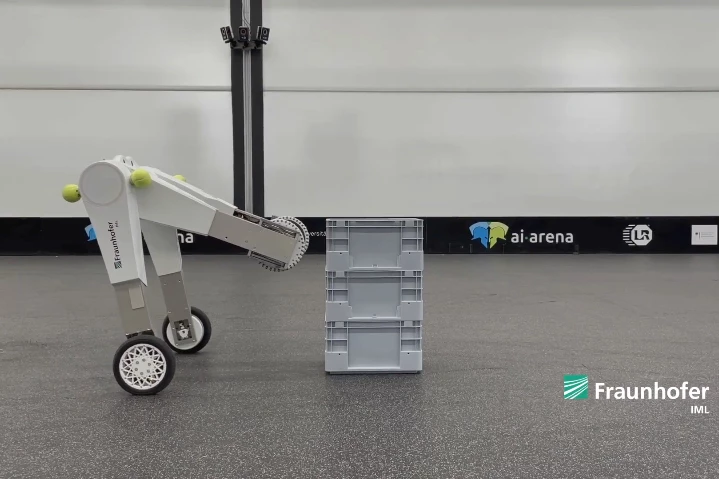We've seen fast, nimble, self-balancing wheeled robots, plus we've also seen robots that can grasp and carry objects. The evoBOT could prove to be particularly useful, however, as it combines both traits in one clever machine.
Designed by scientists at Germany's Fraunhofer Institute for Material Flow and Logistics, the prototype evoBOT stays upright utilizing what is known as the mobile inverted pendulum principle. Putting it simply, this means that the bottom of the robot is constantly moving back and forth, in order to keep the weight of the top section centered above it.
The evoBOT has two legs with powered wheels at the bottom, along with two arms that have inward-facing disc-shaped grip pads at the ends – although it can also be equipped with other types of grippers. When the robot isn't carrying anything, its arm fold down to sit alongside its legs. It can then lean forward and roll at speeds of up to 10 meters (32.8 ft) per second.

Dual optical cameras – along with other sensors and mapping systems – allow the robot to autonomously navigate its way through environments such as warehouses, while avoiding obstacles and making its way up ramps, over small ledges, and across uneven terrain. If need be, it can also make itself shorter by stretching out into a horizontal orientation. In this configuration, its powered wheels are at the back, while unpowered caster wheels on the undersides of its extended arms are at the front.
When the evoBOT reaches the target object, it grasps that item by placing its arms on either side of it, then moving its grip pads inward until they exert enough pressure to lift it. The bot can carry the object through the warehouse or wherever it's being used, releasing the item when the destination is reached.
As an added bonus, the robot is also able to grab hold of unpowered wheeled items such as trolleys, then push or pull them from place to place.
Plans call for the evoBOT to serve as a testbed for new self-balancing robotics technologies, although it may also be commercially manufactured as a product in and of itself. It can be seen in action, in the video below.
Source: Fraunhofer via IEEE Spectrum





